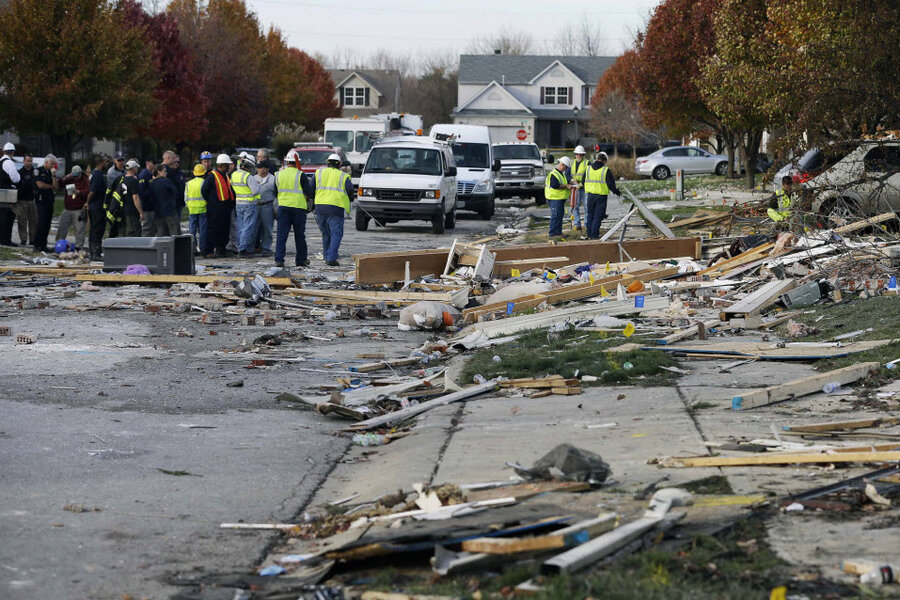Could faulty furnace be behind fiery Indianapolis explosion?
Loading...
| Indianapolis
The owner of one of the homes that exploded in Indianapolis said Monday that a problem furnace could be to blame for the blast that killed two people and damaged dozens of homes so severely officials say they must be demolished.
John Shirley, 50, of Noblesville, told The Associated Press that his daughter sent him a text message last week complaining that the furnace in the home where she lives with her mother and her mother's boyfriend had gone out and required them to stay at hotel.
But Shirley also said when he asked if the furnace had been fixed, his daughter said yes, and he wasn't aware of any additional problems until he heard from his daughter again Sunday morning.
"I get a text from my daughter saying 'Dad, our home is gone. Then I called my ex-wife and she said what happened," he said.
His ex-wife, Monserrate Shirley, declined to comment Monday.
Investigators said they have not determined a cause for the Saturday night blast that sparked a massive fire, blew out windows, collapsed ceilings and shook homes up to three miles away. Public Safety Director Troy Riggs said the search for answers could take some time.
Utility workers have been inspecting gas mains in the neighborhood but so far have detected no leaks, a spokesman said.
The blast forced about 200 people out of their homes in the once-tidy neighborhood of one- and two-story single-family houses.
Some were allowed to return Sunday, and others were able to retrieve a few belongings. But officials have estimated about 30 homes will need to be demolished.
Indianapolis code enforcement officials met Monday with homeowners at a nearby church to discuss the status of their homes. Residents were given information about insurance and demolition procedures and how to make arrangements to visit their homes for an hour to collect belongings.
Mark Karnes, whose house is four doors down from the blast site and suffered severe structural damage, hoped to retrieve clothes and look for his cat. But he questioned the wisdom of going back inside the house given the extent of the damage.
"Because the walls bowed out and separated from the ceiling, I don't think it's safe," he said.
The blast flattened the house Shirley co-owns with his ex-wife and one next door that belongs to second-grade teacher Jennifer Longworth and her husband, John. The coroner's office has not yet identified the two people killed in the blast, but a candlelight vigil was held Sunday night at the school where Jennifer Longworth teaches.
Greenwood Community Schools Superintendent David Edds said parents organized the vigil after word of the blast spread. He said school officials assumed the Longworths were the victims because no one had heard from them and Jennifer Longworth had not shown up to work at Southwest Elementary School, where she'd taught for 12 years.
He said parents organized the vigil and students and teachers were having a hard time with the loss of the popular teacher.
"We've got middle school kids and high school kids who may need to see a counselor because they had her in class and she was that important to them," he said.
John Shirley said Jennifer Longworth was quiet but funny and her husband was a huge Colts fan who maintained a garden of beautiful wild-flowers along the side of the house.
"They were just very sweet people," he said.
Indiana real estate records show Shirley's house had been for sale for a year until it was taken off the market in March.
Associated Press writer Charles Wilson in Indianapolis and researchers Lynn Dombek and Rhonda Shafner in New York contributed to this report.





